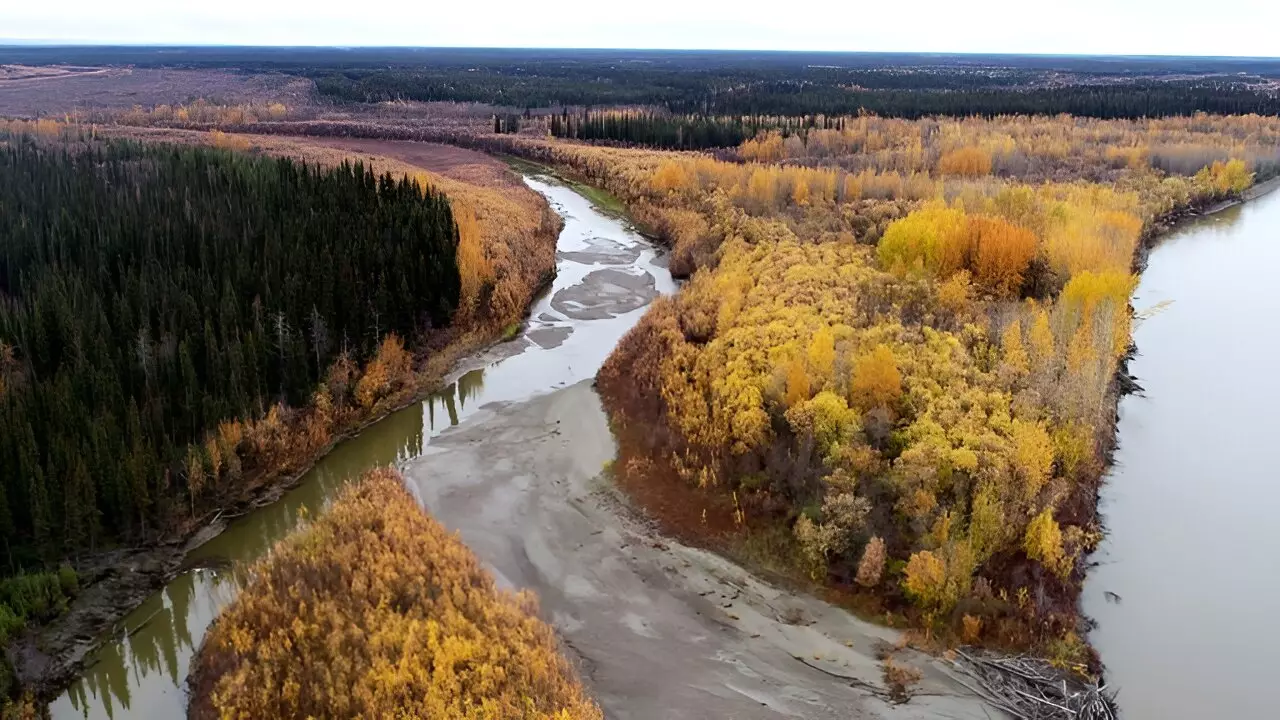As the climate crisis intensifies, the consequences of rising temperatures are becoming increasingly dire, particularly in sensitive environments like the Arctic. The Yukon River, a major waterway flowing westward across Alaska, exemplifies this vulnerability. As the river relentlessly carves through the Arctic permafrost, it releases particulate matter into the surrounding ecosystems. However, not just any sediment is being unearthed; rather, it conceals a hazardous element: mercury. This heavy metal, known for its toxic properties, poses significant risks to both environmental integrity and public health, particularly for the 5 million people residing in the Arctic region.
A recent study published in Environmental Research Letters by a team at USC Dornsife highlights how climate change exacerbates this problem. The Arctic is warming at an alarming rate—up to four times faster than the global average—causing permafrost that has sequestered mercury for millennia to thaw. The implications are both terrifying and vast, as experts suggest that the Arctic may be sitting on a metaphorical “mercury bomb,” primed to release potentially millions of tons of this toxic substance into the environment.
The Mechanisms of Mercury Accumulation
Mercury’s journey into the Arctic ecosystem is intricate. Mercury enters the environment primarily through atmospheric deposition, often traveling from lower latitudes up to the North due to the planet’s natural weather patterns. When it reaches the Arctic, plants absorb the mercury, which eventually decomposes and integrates into the soil, freezing within the permafrost. Over time, this leads to the accumulation of mercury, far exceeding concentrations found in oceans, soils, and the atmosphere combined.
The recent investigation conducted by researchers from prestigious institutions, including Caltech and MIT, focused on sediment samples taken from two villages in Alaska’s Yukon River Basin. Previous mercury assessments relied on core samples from the top layers of permafrost, often yielding variable results that lacked depth and accuracy. The innovative approach taken by the USC Dornsife-led team, which examined sediments from deeper layers, has provided crucial new insights. By analyzing the riverbanks and sandbars, researchers effectively demonstrated a more consistent and reliable method for estimating mercury levels.
The Erosion and Sediment Redistribution Dynamics
Rivers can dramatically alter landscapes, and the Yukon River is no exception. Its movements not only erode banks but also create a dynamic system of sediment redistribution, influencing what mercury-laden material is released into or reburied within the ecosystem. Researchers found that the composition of the sediments plays a pivotal role. Finer-grained sediments were shown to carry higher concentrations of mercury compared to coarser ones, indicating specific soil types that could pose greater environmental risks.
Remote sensing technology further enhances understanding of the river’s shifting paths, critical for predicting future mercury mobilization. By constantly rerouting their trajectories, rivers contribute to the complex interplay of mercury contamination risk. While the Yukon may release dangerous mercury today, it also constrains some of it by redepositing the sediments in specific areas, creating a paradox in the overall risk assessment.
The immediate health hazards posed by mercury are not fully apparent; however, the latent effects of mercury accumulation in the food chain are alarming. Residents of the Arctic regions rely heavily on wildlife and fish for sustenance, making the potential for mercury ingestion a central concern for community health. The buildup of mercury in fish and game species can lead to severe health issues, particularly for those who depend on these resources for their diets over prolonged periods.
Despite the lack of urgent contamination crises like those experienced in urban areas such as Flint, Michigan, the study co-author West points out that dietary ingestion remains the primary pathway for human exposure to mercury in these communities. Increasing concentrations of mercury, driven by thawing permafrost, could signify an impending environmental health disaster for Arctic populations.
The researchers involved in this critical study aim to foster accurate assessments of mercury risks in the Arctic, hoping to avert the consequences of this silent yet serious threat. By improving methodologies for estimating mercury release from melting permafrost, scientists hope to empower communities and policymakers with data necessary for effective risk management. The crux of the issue lies in acknowledging both the erosion and reburial processes of mercury-laden sediments. Fostering awareness and understanding of these frightening dynamics is essential for safeguarding Arctic communities and their ecosystems from the slow but devastating impacts of climate change.
The unfolding crisis around mercury in the Arctic serves as a stark reminder of the multifaceted challenges posed by climate change and environmental degradation. In-depth research, collaborative efforts, and innovative solutions are essential to manage these risks effectively and protect both human health and fragile ecosystems.

